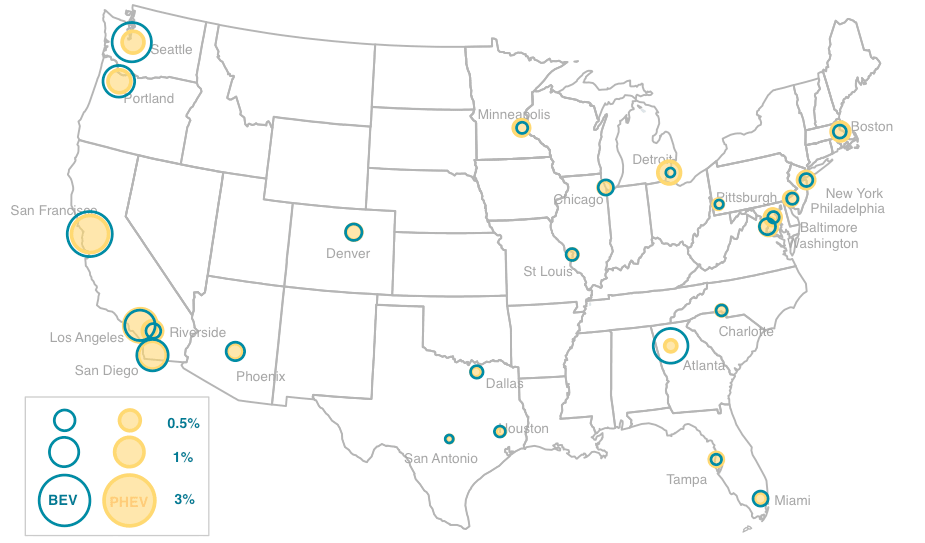Blog
What cities are leading the charge on electric vehicles?
Occasionally we get glimpses into automakers’ plans to deploy more electric vehicles (EVs). Nissan is now offering free charging in 12 US cities to help accelerate its record-setting LEAF sales. BMW has been pretty hot lately with its new i3, now at 5% of all US BMW sales. GM looks like it will double down on its electric-drive efforts with its 2nd-generation plug-in hybrid electric Volt in 2015. But where, how, and why the early electric-drive market is taking shape is difficult to figure out.
Many states are taking action with subsidies, as well as parking and carpool incentives, to spur the EV market. Our recent US state EV evaluation offers a great first step in our understanding how these various state policies are adding up to real consumer benefits and thus helping to drive EV sales. Now we at the ICCT are just beginning a new city-focused EV project, with the 11th Hour Project, C2ES, C40, and other partners across US cities to assess what is going on, what is working, and what could be done better to promote EVs. We’ll analyze major US cities’ fiscal incentives, charging infrastructure, utility actions, and seek to provide tangible recommendations based on what “best practices” appear to be emerging. We’ll also assess how various policies could evolve over time, along with vehicle technology improvements, to make electric vehicles viable for more mainstream consumers.
We’re early in our analysis of US cities, but below we show a snapshot of one of our more recent research finds. The graphic shows new vehicle sales shares of battery electric vehicles (BEVs) and plug-in hybrid vehicles (PHEVs) for 2013 for the 25 most-populous metropolitan areas – the new vehicle share is illustrated by the size of the circles. Leading cities of Atlanta, Seattle, Portland, San Francisco, Los Angeles, and San Diego each have 3-7 times greater BEV and/or PHEV new vehicle shares than the national averages (which were 0.3% each for 2013). We also see that Atlanta’s greater BEV shares, and northeastern cities greater PHEV shares, stand out compared to how BEV and PHEV shares are quite similar to one another elsewhere.

New plug-in electric vehicle shares in 25 most populous US cities in 2013 (Based on IHS Automotive data)
But questions remain. What are the most important factors that are driving these patterns? As we assess all the relevant policy, vehicle, charging, utility, fuel price, and other information, we’ll work toward a few more blogs, webinars, and reports through 2015 to let folks know what we’re finding out. We especially look forward to working directly with advocates and city officials across the cities to understand what they’re doing and what they’re learning in these early days to promote the transition to electric-drive.
